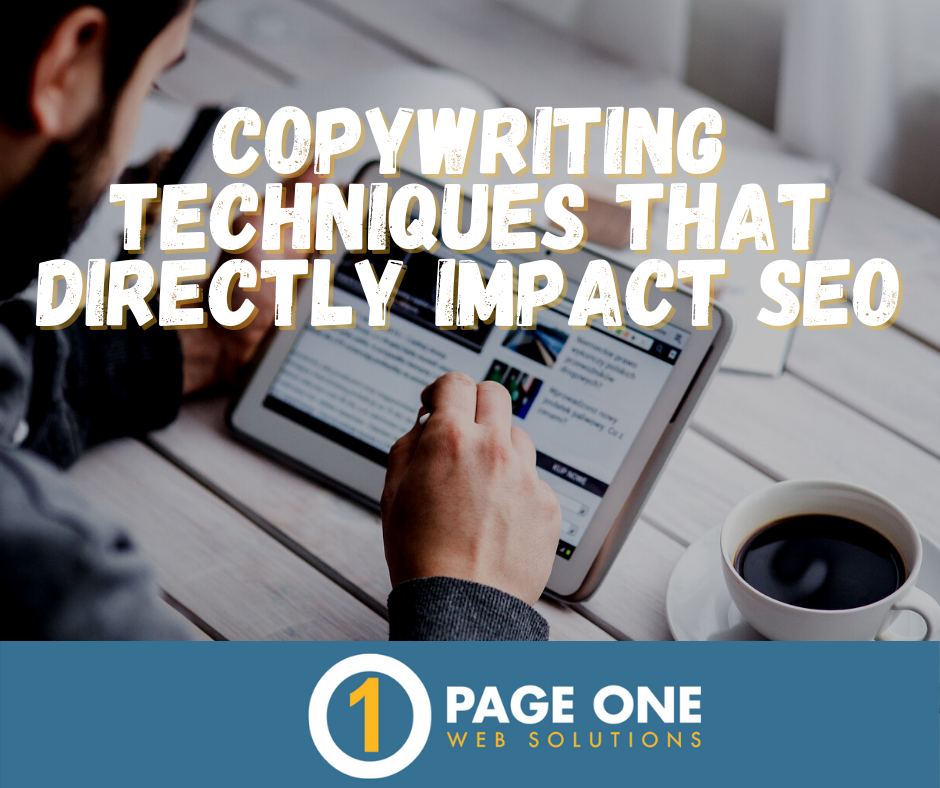In the digital marketing world, content is king! The purpose of SEO copywriting is to create compelling, valuable content that serves as a resource for your target audience of users. At the end of the day, you want your readers to take action, which looks a little something like this:
Search [your target keyword] → Resource [your incredibly useful content] → Results [your goal action: form fill, purchase, etc.]
People who are searching Google for specific terms or phrases are looking for answers, and it’s up to YOU to provide them with the information they need! Make it entertaining, make it straightforward, make it sexy, and make it optimized. Generating high-quality SEO copywriting is not only good for your target audience; it tells search engines like Google that your website is legitimate, trusted, and helpful to users.
By implementing SEO content, over time you can expect to:
- Establish authority within your industry
- Improve your SEO ranking
- Lower your bounce rate
- Increase your click-through rate
- Generate more (and high quality!) backlinks
- Increase your organic website traffic
Basically, you can’t go wrong with well-optimized content. We’ve put together our best tips to help you learn the techniques that will have the biggest impact on SEO!
1. Work In Keywords Naturally
While incorporating target keywords into your content is definitely important, making your content reader-friendly will always take priority. Don’t force it! The ultimate goal of optimized content is to meet the needs of readers, answering their questions and serving as a reliable resource. Even with a long-tail keyword that includes several words, algorithms these days are smart enough to piece together what term you are targeting whether or not it’s exact. Working in your keyword and other related terms naturally is the way to go to ensure that readers are getting readable, relevant information.
2. Know Your Audience
This may seem like a no-brainer but it needs to be said: choose keywords that are customized to your target audience. Don’t just focus on keywords you want to appear for - think about what your buyer personas are actively searching for. That keyword group will serve as a great jumping-off point for your content. From there, you can assess which keywords have the highest search volume and most manageable competitive edge. A low-volume keyword that is specific to your business and target audience will nearly always result in more qualified traffic.
3. Use Featured Snippets to Your Advantage
If you’re wondering where to start when it comes to figuring out just what the heck your readers are looking for, look to Google’s featured snippets! Also called ‘position zero’ because of their top-of-the-page status, featured snippets are the content boxes that give you instant information about your search term or question.
Type in some of your target keywords and see what comes up - is there a featured snippet that targets your term? What does that content look like? Emulating content that is already ranking there can help you boost your position in the SERPs. Generally, to rank in position zero, you’ll want to do two things: include your keyword as early in your content as possible and try to answer the question at hand precisely as you can.
4. Break Up Text-Heavy Content
No matter how high-quality your content is, scrolling through a long page of consistent text can get boring for users very quickly and even cause some to bounce. Break up your content by using varying-sized headers (think H2, H3, H4), imagery, infographics, bulleted lists - anything that will add some depth and interest to your content! Plus, not only are these visually appealing and make for more scannable content; they actually improve SEO by creating more opportunities for keyword optimization.
5. Incorporate Valuable Internal Links
When adding internal links to your content, consider the path of the reader. Where would it make sense for them to migrate to after exploring your content? Including relevant internal links can improve user experience by creating a clear path for your target audience. This is excellent for readers and great for Google, too - internal links boost crawlability to help your site get indexed faster!
6. Optimize Based on Content-Type
When creating content for your site, keep in mind the type of content you are publishing. Are you writing an educational blog piece or creating copy for a product page? Are you posting a technical whitepaper or updating a general services page? Best practices differ slightly depending on the type of content you’re creating, so it’s important to keep this in mind to help you optimize properly.
For example, a product page should have fewer internal links than a blog because the goal of that page is to keep users shopping and, ultimately, make a purchase. It also tends to be harder to work keywords into a product page because they often have less content, so as not to take away from the actual products.
When it comes to SEO copywriting, the moral of the story is to first and foremost focus on your target audience. Take stock of what types of content you are creating, optimize what you can, and have your primary goal be to provide the best user experience possible.
Do you have any awesome copywriting tips that we may have missed? Suggestions for tactics that have worked for your campaign? We want to hear your thoughts! Comment below or reach out to us at Page One Web Solutions!

